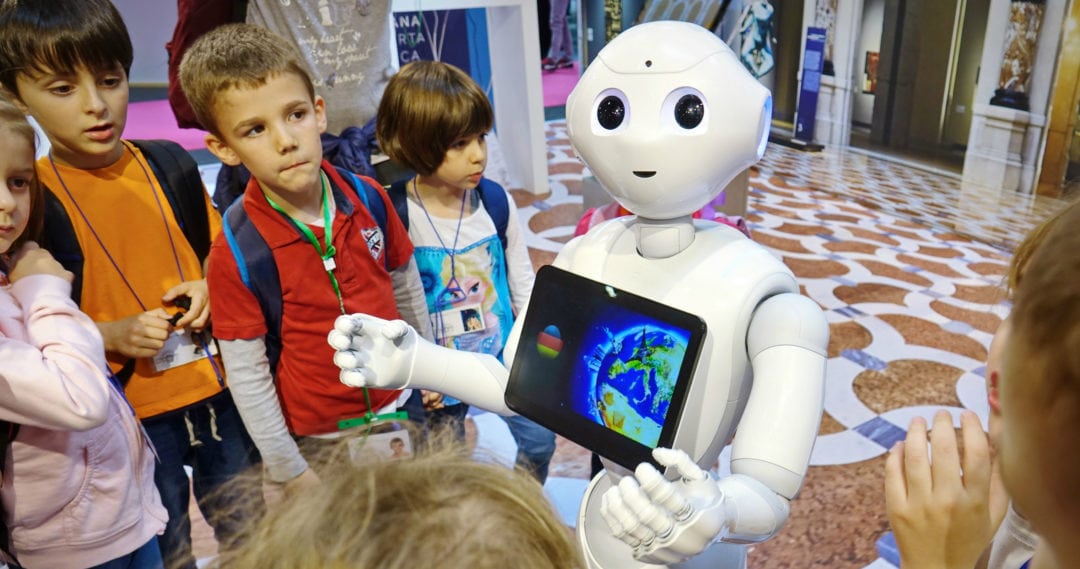Insights
INSIGHTS
All Topics
Three great examples of charity "AI for good" projects
06 Jul 2018by Former Member
The doors of AI innovation are opening for the charity sector, with companies such as Microsoft reaching out to partner with charities on their ideas
Sponsored by Microsoft
The doors of AI innovation are opening for the charity sector, with companies such as Microsoft reaching out to partner with charities on their ideas. We showcase three standout examples of charity AI partnerships already emerging
There is a huge amount of excitement around Artificial intelligence (AI) right now in all sectors and industries. But look beyond the hype and there are many early stage examples of AI for good projects by charitable organisations already quietly making headway in this brave new world. We’ve picked out three impressive examples of charities partnering with tech leaders to achieve amazing things with machine learning and data.
Such partnerships are bound to become more common as charities look to leverage these new tools. While it’s unlikely that many (if any) charities will have the skills in-house when it comes to developing AI systems, they will be able to tap into the expertise and resources of the commercial sector, as the Charities Aid Foundation explained in its recent report on AI in the charity sector. For anyone looking for a good introduction to some of the challenges and wider impacts of AI in the charity sector, the report is a worthwhile read.
Tech giants like Microsoft are stepping forward to start this new wave of partnerships - just recently the company announced it is offering free one-to-one workshops for charities of all sizes to start harnessing the benefits of AI.
The AI envisioning programme, which will be taking place in locations across the UK in September this year, is designed to help each charity flesh out an idea they have around machine learning, working alongside some of Microsoft’s expert partners in AI.
To get involved, charities are being invited to send in their applications before 13th July. While the possibilities around AI and machine learning are vast, some of the examples below might get charities thinking about their own ideas.
The Children’s Society - Breaking language barriers
UK children’s charity The Children’s Society works with a large number of young migrants and refugees seeking asylum, many of whom are victims of trafficking. To understand their stories and the problems they face the charity needs to use third-party interpreters, but the interpreters often have to listen in on highly sensitive information and this creates a barrier to trust.
The charity began experimenting with Microsoft Translator live feature - an in-person translation tool, currently in preview. Built on the same machine learning technology that powers Skype Translator, it uses neural networks to create more realistic, human-sounding translations.
The Children’s Society envisions that being able to hold a conversation using a mobile phone will help non-English speaking refugees in many aspects of their lives such as travelling to appointments with government officials and prospective employers.
“Almost everyone has a smartphone on their person,” says Tanvi Surti, a program manager on the Microsoft Translator team who is leading the development of the Microsoft Translator live feature, in a blog post on Microsoft’s website.
“We spent a lot of time thinking about the set-up experience.
Let’s say you and I speak two different languages, how do we get connected quickly without spending too much time thinking about how to connect and spending more time in the conversation itself.”
“ls the quality perfect? No. Is the setup totally seamless? No. But really, once you get set up, you have a universal translator experience amongst multiple people talking in multiple languages."
Chesapeake Conservancy - Mapping changing ecosystems
Being able to track changes over time is vital to protecting complex ecosystems. But building accurate and precise spatial data about the landscape can be a huge challenge, needing complex algorithms, expert staff and large amounts of computing resources.
Chesapeake Conservancy is a small nonprofit organisation in Annapolis, Maryland charged with protecting over 100,000 square miles of wetland and forest that make up the Chesapeake Bay. It has used Microsoft’s AI technology, integrating with data from Esri’s ArcGIS platform, to create real-time, high-resolution land cover maps to guide their conservation efforts.
The project is allowing them to drastically improve information about the natural and artificial features, giving them 900 times the amount of information with a high degree of accuracy.
This is helping them put the right conservation and restoration efforts into the right area at the right time, saving governmental and nonprofit resources. Not only that, but the data is freely available and is being used by other organisations to integrate into their own systems and help guide other local planning efforts.
“The power of data behind the Chesapeake Bay High-resolution Land Cover Project cannot be overstated," says Nick DiPasquale, Director, Chesapeake Bay Program, on the organisation’s blog."
This is a technological snapshot, the likes of which we’ve never had before, of exactly how the land is being used across the entire watershed. Now restoration and conservation decisions can be made that more closely and accurately reflect real-world conditions.”
Cystic Fibrosis Trust - Cracking the cystic fibrosis code
There are more than 1,400 possible mutations of the faulty gene that causes cystic fibrosis. As a result, it’s a complex condition affecting people in many different ways. Understanding how to treat and manage the disease each of the 10,000 or so cystic fibrosis patients in the UK can be tricky as they need to be approached on an individual basis- one prognosis may not fit everyone.
UK charity the Cystic Fibrosis Trust has partnered with the Alan Turing Institute (the national institute for data science and artificial intelligence) to use advanced machine learning techniques on UK Cystic Fibrosis Registry data taken from 99% of people diagnosed.
From AI analysis of this data, they are able to better spot patterns in behaviour, symptoms and treatment effects. As a result, they’ve been able to create personalised risk score for people with the condition, which can then be used to tailor treatments more effectively, with the potential to improve the lives of many people.
“This is very exciting research for people with cystic fibrosis," says Thom Daniels, cystic fibrosis physician and external advisor, speaking on the Alan Turing Institute blog.
"People living with cystic fibrosis frequently want to know why their health is like it is now, and what will happen to their health in the future. By applying the very latest cutting-edge computer technologies to analysing data collected from people with cystic fibrosis, we hope it may provide them with better information to help predict their health in years to come.
If successful it could help provide enormously powerful tools for patients and doctors to use together to help decide which are the best treatments to recommend and when.”
More on this topic
Recommended Products
Our Events
Charity Digital Academy
Our courses aim, in just three hours, to enhance soft skills and hard skills, boost your knowledge of finance and artificial intelligence, and supercharge your digital capabilities. Check out some of the incredible options by clicking here.













